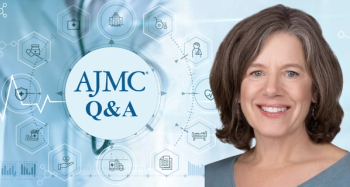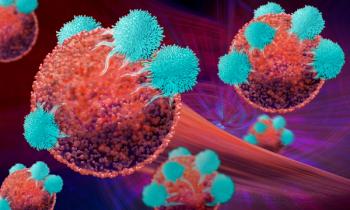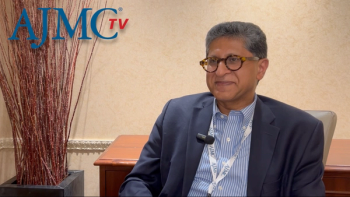
- April 2021
- Volume 27
- Issue 3
Delays With Payers Mean Some Patients Miss Window for CAR T-Cell Therapy, Findings Show
When a physician makes the call that chimeric antigen receptor (CAR) T-cell therapy offers the best chance for survival in patients with relapsed large B-cell lymphoma (LBCL), there isn’t time to spare. But data gathered over the past 2 years by a team from Cardinal Health Specialty Solutions revealed that community oncology practices can encounter roadblocks when trying to navigate payer approvals for CAR T-cell therapy. These barriers can lead to time running out before patients can receive the therapy—and the situation isn’t improving, even though the first CAR T-cell treatments were approved more than 3 years ago.1,2
With a new, less toxic CAR T-cell therapy now approved3 and more in the pipeline—including treatments for multiple myeloma—the findings raise concerns that disconnects among payers, providers, and patients are stalling, and could continue to stall, timely implementation of this lifesaving treatment. Data from hematologists/oncologists were gathered a year apart, first in February 2019 and then between November 2019 and February 2020. The initial survey covered 59 physicians, who were all in some type of community practice; the second included 168. Each time, almost one-third of patients who were referred for CAR T-cell therapy ultimately were unable to receive it. “High cost and toxicity continue to be potential deterrents to CAR-T consideration and appear to be increasing in significance,” the authors concluded.
For insights, Evidence-Based Oncology™ (EBO) spoke with lead author Ajeet Gajra, MD, MBBS, FACP, vice president at Cardinal Health, about identifying and removing the barriers for offering CAR T-cell therapy at the community practice level. The interview is edited for clarity.
EBO: It’s normal to have challenges with payers when a new therapy is approved. However, your findings show that the percentages of patients who were unable to receive CAR T-cell therapy after referral were about the same nearly a year apart, with the second survey coming more than 2 years after approval. What accounts for this?
GAJRA: These are complex therapies—they are essentially living cells derived from a particular individual, then engineered to be used as therapy for that individual. Obviously, the therapies are challenging in terms of logistics, and there’s also the cost factor. The issues are twofold. The first rests with the providers: They need to be very clear in terms of who they’re referring for CAR T therapy. The labels are very explicit: [the patient needs to have had] 2 prior therapies and progression, and [must meet requirements] also in terms of medical comorbidities. This is not just something that you can try [on a whim], because CAR T therapy needs planning and it requires following each step of a detailed process.
The second issue, as we all know, is the complex prior authorization process with payers. For some of these patients, it can be daunting for the managing team to collect all the information needed in a timely fashion to satisfy a payer’s requirements. [To start,] the payer needs the records of the diagnostic biopsy, the history of therapies and regimens received thus far, [whether] they’ve had bone marrow transplant.
If care has been fragmented—especially if the patient was treated at another facility or, say, a tertiary center where they went for care or a transplant—all that information has to be populated. That is a potential barrier, which leads to delays. Diffuse LBCL is not a disease that you can temporize with simple measures. If it’s recurring a third time, these patients tend to be quite ill. A delay of a week or two sometimes can force the hand of the provider to take an alternative route, because they feel, “My patient is deteriorating, I still don’t have the authorization, so what am I to do?” And they have to craft an alternative plan. So, we may be capturing some of those issues when it comes to the patient, provider, and payer factors leading to delays.
EBO: As you noted, the payer delays can lead to the to the patient not receiving the therapy at all. Do providers need more support to navigate the process, whether from a professional organization or from the manufacturers themselves?
GAJRA: Absolutely. I feel strongly that additional support would be valuable. We found that most providers thought that they were quite well versed with the science behind CAR T. Many of them, though, may not actually be aware of the [full] complexity of the process involved in getting a patient on to CAR T and then managing them afterward. I feel it still starts with education—you don’t want to refer the wrong patients, because ultimately, they’re going to go through the rigmarole and not end up getting the treatment. That’s another piece we captured, where patients were being referred to CAR T centers, but ultimately not getting the treatment.
Second is support, support, support. We [generated] these results [at a time when] only 2 CAR T products [were available]. We now have 3 CAR T-cell products approved, with 1 for mantle cell lymphoma. CAR T therapies [must] be administered at designated CAR T centers, but about 1 in 6 providers didn’t have a CAR T center in their geographic vicinity, which is a barrier. Also, there’s a question of whether there can be reciprocity. Must each center be approved for every therapy that they’re going to administer? Manufacturers can help with that piece. Patient support and access services sponsored by pharma companies can help with streamlining the prior authorization process, to expedite how quickly patients can check all the boxes—get all the i’s dotted and the t’s crossed so that they can at least be evaluated sooner. Hopefully, patients can be approved by the payer sooner, when appropriate, to move to the next step.
EBO: We talked about toxicity as being among the big challenges with CAR T-cell therapy; that’s been the case from the time it was approved. Is this a bigger challenge at the community level, in terms of the patient in this setting being more concerned about the looming threat of [cytokine release syndrome] CRS? Is it more the provider who has the concern? Or is it a combination?
GAJRA: It’s a great question. I certainly agree that the specter of toxicity is still [quite] strong, and that community practices have a lower threshold or a greater concern for toxicity than the academic centers. This has come out loud and clear at [live meetings] when we engage with providers. [The audiences] often include a mix—largely community oncologists, but with some academic representatives as well.
Patients are concerned, but for the most part, with appropriate counseling, they’re willing to receive therapy because they realize they are running out of options. I would also highlight that as the field evolves, remarkable improvements have been made in the management of toxicity, so a lot of it can be mitigated and managed early. The thresholds have improved in terms of identifying CRS as well as neurotoxicity; [the latter] can be quite scary and devastating.
The scientific literature shows that management of toxicity has definitely improved, especially now with real-world use of CAR Ts being reported. Patients, for the most part, are quite eager to receive what many of them probably perceive as lifesaving and/or significantly life-prolonging therapy. But [it’s a different challenge] for community physicians, especially those who aren’t attached to a large tertiary care hospital. They don’t have immediate access to critical care—to an intensive care unit
(ICU)—and if your patient’s health is declining [due to CAR T toxicity], they are going to [need to] land in the ICU. A lot of work [has been done] on the disparities in rural settings and smaller communities, and I think there’s definitely more apprehension with therapies like CAR T in the smaller, more remote practices.
EBO: In data that you presented at the 2020 American Society of Hematology (ASH) Annual Meeting and Exposition, the emergence of the cost factor as a barrier is very apparent in the second round of data collection. What accounts for this?
GAJRA: We learned from our initial work that cost was a major concern in the minds of the treating oncologists. Thus, we decided to reassess as a follow-up: We had a larger sample size than in [the first survey], and it was more than 2 years since the approval of the initial therapies. However, [our results] showed that in addition to intake and toxicity concerns, cost remained a major barrier, or major concern, in the minds of the providers [due to gaps between the treatment list price and reimbursement rates, especially from Medicare]. That gap has perhaps never been completely bridged….[As far as] we know, the [list price] is about $373,000 for treatment. Certainly, attempts have been made with NTAP, the New Technology Add-on Payment [in Medicare], to reduce that burden; [the goal is to not rely on the hospitals] where the majority of CAR-T is being administered just to supplant the funding for the facilities. [Still,] it cannot be denied that it is still a very high-cost therapy.
Some of this cost sensitivity may arise from the fact that providers are looking at longer-term outcomes. If providers are [committing] to a complex process and an expensive therapy, then do the outcomes bear that out? Especially if there are a lot of early failures of therapy, then this perhaps is a barrier. I don’t have evidence for this, but it has been brought up by providers as a possible barrier during discussions at live meetings on the subject. In my mind, if a greater confidence [develops] in being able to safely administer these therapies in the clinic vs in the hospital, there will be greater interest in these therapies. Otherwise, it’s really the hospital that’s bearing the cost. If you do it as an outpatient infusion, though, then it becomes a proposition for the practice, given that it’s a very expensive infusion….The community practice planning on outpatient administration has to assess the risk of the patient getting sick and getting admitted for toxicity. As we learn more, though, community oncologists will become more confident about preventing toxicity and ensuring that they can safely administer these treatments on an outpatient basis. That’s where the future is, and I think that will really help CAR T-cell therapies take off.
EBO: You mentioned the gap in Medicare funding. How does this compare with reimbursement for patients with commercial coverage?
GAJRA: We don’t have an answer for this question yet. We haven’t teased that out. That’s just the honest truth—it wasn’t part of what we’ve surveyed thus far. This question will be more suited for CAR T centers performing the actual infusions.
EBO: Fair enough. I’d like to ask about coronavirus disease (COVID-19). It would seem that during the pandemic, there would be an interest in not keeping patients in the hospital any longer than necessary. COVID-19 emerged since you gathered your information, but I’m wondering what it’s been like since then—has the pandemic made it more favorable to administer CAR T-cell therapy in the community setting?
GAJRA: Absolutely. We’re actually redoing the survey as we speak. We hope to get a decent sample size of current practices; we wanted to redo it in the context of having 3 products now approved. And, hopefully, we’ll see more CAR T therapies coming down the pike in 2021; some data looked really good coming out of ASH 2020. There seems to be anecdotally a lot of interest, especially among larger practices that are geographically close to a hospital setting, in taking on outpatient infusion of CAR T-cell therapies. We certainly got that [impression] during our discussion the last time, [last] spring, so we’re trying to see if that change has actually transpired.
[COVID-19 is a driver for outpatient care and for almost everything else], including CAR T. [Please note] that the label of one of the initial 2 products indicated that it should be given in the hospital, while that was not the case for the other product. The labeling, or the implications of the label, also impacts practice. As we see new products emerge, if there’s no direction that they should be given in a hospital, I think that will encourage the use of these therapies in the outpatient setting. But the COVID-19 pandemic, as we all know, has been a driver to push care away from the hospital and into the clinic.
EBO: We’ve covered a lot of ground. Would you like to add anything that we didn’t cover?
GAJRA: First of all, even though now it’s been 3-plus years since the original approval, there is still room for educating and keeping the community provider especially engaged. It’s not every day or every other day that a community provider will have the opportunity and will have the appropriate patient for a CAR T-cell therapy. It’s not like, say, hormone-positive breast cancer, which they [commonly] see. So, I think, as more and more indications become amenable to CAR-T therapy, that ongoing engagement with be essential, [whether it stems] from the manufacturers, from organizations, or from [health care media]—whatever avenue there is.
Second is the prior authorization process. Streamlining that process for the appropriate patient is so critical, and anything that can be done to simplify and facilitate that, both from the payer perspective and the manufacturer side, would really help drive this therapy further.
Third, perhaps manufacturers can help identifying the pain points at the CAR T centers. These are typically large academic or tertiary-care cancer centers. We’ve encountered concerns from community oncologists, including that the patient was referred for CAR T, but was ultimately treated with a transplant; that a finite percentage of patients never ended up getting CAR T at the CAR T center; and that communication wasn’t adequate in terms of what the community provider should do when the patient returns after CAR T-cell therapy.
[In short,] we’ve heard that the intake of the CAR T was so slow. Here, you have a patient for whom you’ve moved heaven and earth for prior approval authorization, and you referred them, but then they couldn’t get in or it took too long. So, I think that’s another area where we can shave some time off in terms of getting the patient in line for CAR-T. Another potential barrier to CD-19–directed CAR T therapies in LBCL is the recent approval of tafasitamab (Monjuvi), a CD-19–directed monoclonal antibody, which is easy to give in the office and technically targets the same antigen. What is not known clearly is whether prior exposure to tafasitamab leads to impaired response with CAR T-cell therapy and vice versa.
One other thing that we learned—and I think the community physicians are learning this as well—is that patients are likely to need bridging therapy while they are awaiting CAR T-cell therapy. In the early days, they were sort of taken aback: “Oh, what am I supposed to do now? You’re not going to have your product for another 6 to 8 weeks?” But now they’re learning that yes, something else is needed to hold the disease—ie, bridging therapy—while awaiting the CAR T product, so it’s really a multipronged approach. And I feel the manufacturer, CAR T center, provider, and the patient, and then the payer, are in it together, and little tweaks can streamline the process [to work] somewhat better than it does now.
References
1. Gajra A, Jeune-Smith Y, Kish J, Yeh T-C, Hime S, Feinberg B. Perceptions of community hematologists/oncologists on barriers to chimeric antigen receptor T-cell therapy for the treatment of diffuse large B-cell lymphoma. Immunotherapy. 2020;12(10):725-732. doi:10.2217/imt-2020-0118
2. Gajra A, Hime S, Smith Y, Feinberg BA. Adoption of approved CAR-T therapies among US community hematologists/oncologists. Blood. 2020;136(suppl 1):34-35. doi:10.1182/blood-2020-141990
3. FDA approves new treatment for adults with relapsed or refractory large B-cell lymphoma. News release. FDA; February 5, 2021. Accessed February 5, 2021. https://www.fda.gov/news-events/press-announcements/fda-approves-new-treatment-adults-relapsed-or-refractorylarge-
b-cell-lymphoma
Articles in this issue
over 4 years ago
Path to Better Payment System to Be Clear Over Timeover 4 years ago
AJMCtv Interviews: April 2021Newsletter
Stay ahead of policy, cost, and value—subscribe to AJMC for expert insights at the intersection of clinical care and health economics.





























































